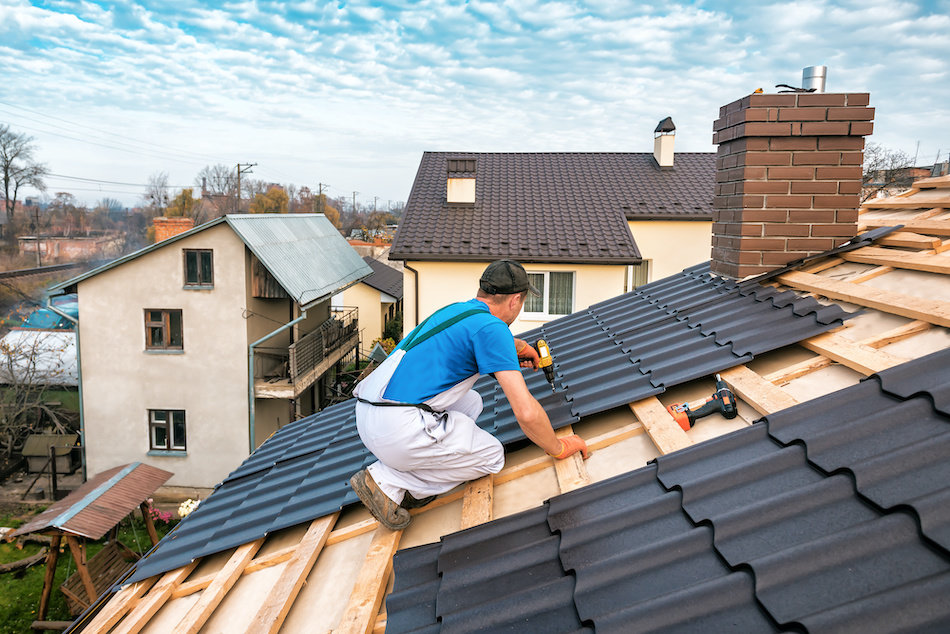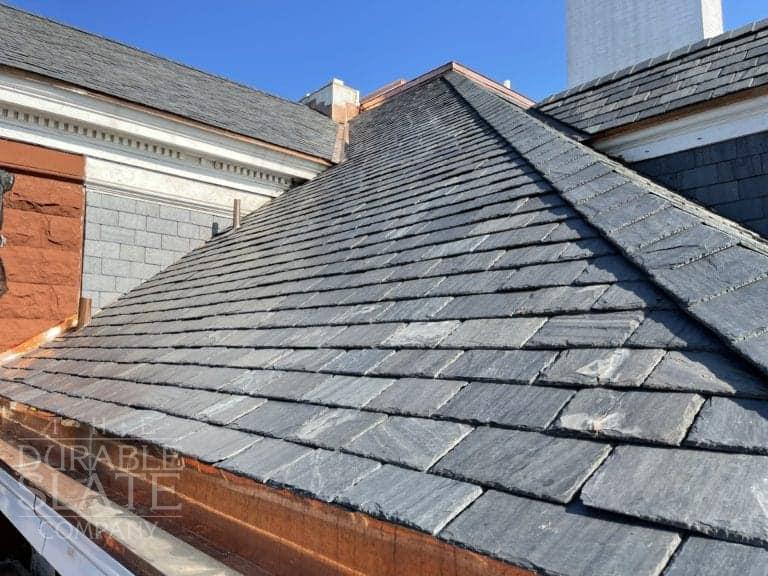Customer Reviews on the most effective Gainesville FL Roofing Companies Available
Customer Reviews on the most effective Gainesville FL Roofing Companies Available
Blog Article
Ideal Practices for Ensuring Correct Roof Air Flow
Making sure proper roof covering ventilation is crucial for the long life and performance of a roof covering system. A well balanced consumption and exhaust vent proportion, typically 1:300, plays a pivotal role, with consumption vents preferably put at the lower side of the roofing for cool air entry and exhaust vents at the height for warm air leave. Routine inspections to determine obstructions and preserve clear air movement are paramount. Moreover, maintaining insulation away from vents is critical to stop airflow constraint. Understanding these foundational components sets the phase for even more thorough understandings right into setup and maintenance practices that can significantly boost your roof's efficiency.
Understand Ventilation Basics
Effectively understanding ventilation essentials is essential for ensuring the durability and performance of roof covering systems. Efficient air flow mitigates moisture build-up and temperature level extremes in the attic, both of which can cause substantial architectural damages gradually. A well-ventilated roof covering assists in stopping common issues such as mold and mildew growth, wood rot, and ice dams, which can jeopardize the stability of the roofing products and the underlying structures.
The primary objective of air flow is to facilitate the motion of air, permitting for a constant exchange between the interior and outside atmospheres. This equilibrium is attained through a combination of intake and exhaust vents that collaborate to preserve optimal air movement. Consumption vents, generally located along the soffits or eaves, enable fresh air to get in the attic room space, while exhaust vents, commonly situated at or near the roof ridge, make it possible for hot, moist air to run away.
Secret aspects affecting the effectiveness of roofing ventilation consist of proper positioning, sufficient sizing, and ensuring that both consumption and exhaust vents are unobstructed. Routine inspection and upkeep are crucial to identify possible obstructions, damages, or inefficiencies in the ventilation system, therefore protecting the roofing system's efficiency and resilience.
Types of Roof Vents
Roof covering vents play an essential role in keeping efficient attic air flow and, by extension, the overall health of the roofing system. Different types of roof covering vents are offered, each with special advantages customized to details roof needs.

Soffit vents are installed under the eaves and job in tandem with roof vents to make sure a balanced consumption and exhaust system. By permitting cooler air to get in from below, soffit vents promote the expulsion of warm air with top vents. Gable vents, situated on the exterior wall surfaces of the attic, deal another effective solution, particularly in homes with gable roofings.
Assess Your Existing Air Flow

Following, think about the age and problem of your roofing products and ventilation parts. Older systems may not abide with present building codes or may have worn away gradually, reducing their efficiency. Conduct a complete assessment to recognize any kind of indications of damage, such as corrosion, damage, or gaps that can endanger the system's efficiency.
Furthermore, measure the attic room temperature level and humidity degrees. High temperature levels and humidity can suggest poor ventilation.
Installation Best Practices
Efficient setup of roof covering ventilation systems is vital for making certain optimal performance and longevity. Appropriate setup starts with recognizing the specific ventilation needs of the structure and the roof it covers. This involves determining the right proportion of consumption to exhaust vents, generally adhering to the 1:300 policy, which states one square foot of air flow for every single 300 square feet of attic room floor room.

Intake vents should be installed at the roofing's reduced edge, frequently in the soffits, to permit great air to enter. Exhaust vents, on the various other hand, should be set up near or at the roofing system's top to assist in the leave of cozy, wet air.
Seal all air vent links meticulously to avoid air leakages and possible water seepage. Usage have a peek at this site premium products and comply with supplier guidelines to make certain sturdiness and efficiency. Furthermore, integrating ridge vents with baffles can considerably improve air flow efficiency by stopping wind-driven rainfall and snow from getting in the attic.
Inevitably, precise installation of roof covering ventilation systems reduces potential concerns such as mold growth, ice dams, and structural damage, making sure the roof's stability and the building's general health.
Routine Upkeep Tips
Uniformity in maintenance techniques is essential to making sure the long-term performance of roofing ventilation systems. Throughout these evaluations, ensure that vents Visit Website are cost-free of particles, nests, and other blockages that can hinder air flow.
Make use of a soft brush or a vacuum to remove dirt and debris from consumption and exhaust vents. Be cautious not to damage the vent displays or louvers throughout the process.
Proper insulation is similarly vital. Ensure that attic insulation does not obstruct the vents, as this can seriously limit air movement. If any type of insulation has moved or resolved, rearrange or replace it to keep a reliable barrier.
Finally, change any damaged or missing out on components without delay. Broken vents, fractured tiles, or deteriorated flashing can all add to insufficient air flow and ought to be resolved without hold-up. Normal maintenance makes certain that the roofing ventilation system functions ideally, therefore expanding the life-span of the roofing system itself.
Verdict
Ensuring proper roof ventilation is paramount for maintaining the performance and resilience of a roof covering system. Adherence to the 1:300 intake and exhaust air vent ratio, paired with the tactical placement of vents, is essential.
A balanced consumption and exhaust vent proportion, typically 1:300, plays a crucial role, with intake vents preferably placed at the lower side of the roof for cool air entrance and exhaust vents at the optimal for warm air exit. Consumption vents, typically located along the soffits or eaves, allow fresh air to go into the attic area, while exhaust vents, usually situated at or near the roofing system ridge, make it possible for hot, damp air to get away.
Soffit vents are set up under the eaves and job in tandem with roof vents to guarantee a well balanced intake and exhaust system. By permitting cooler air to get in from below, soffit vents facilitate the expulsion of hot air via top vents. Adherence to the 1:300 consumption and exhaust air vent proportion, coupled with the critical positioning of vents, is important.
Report this page